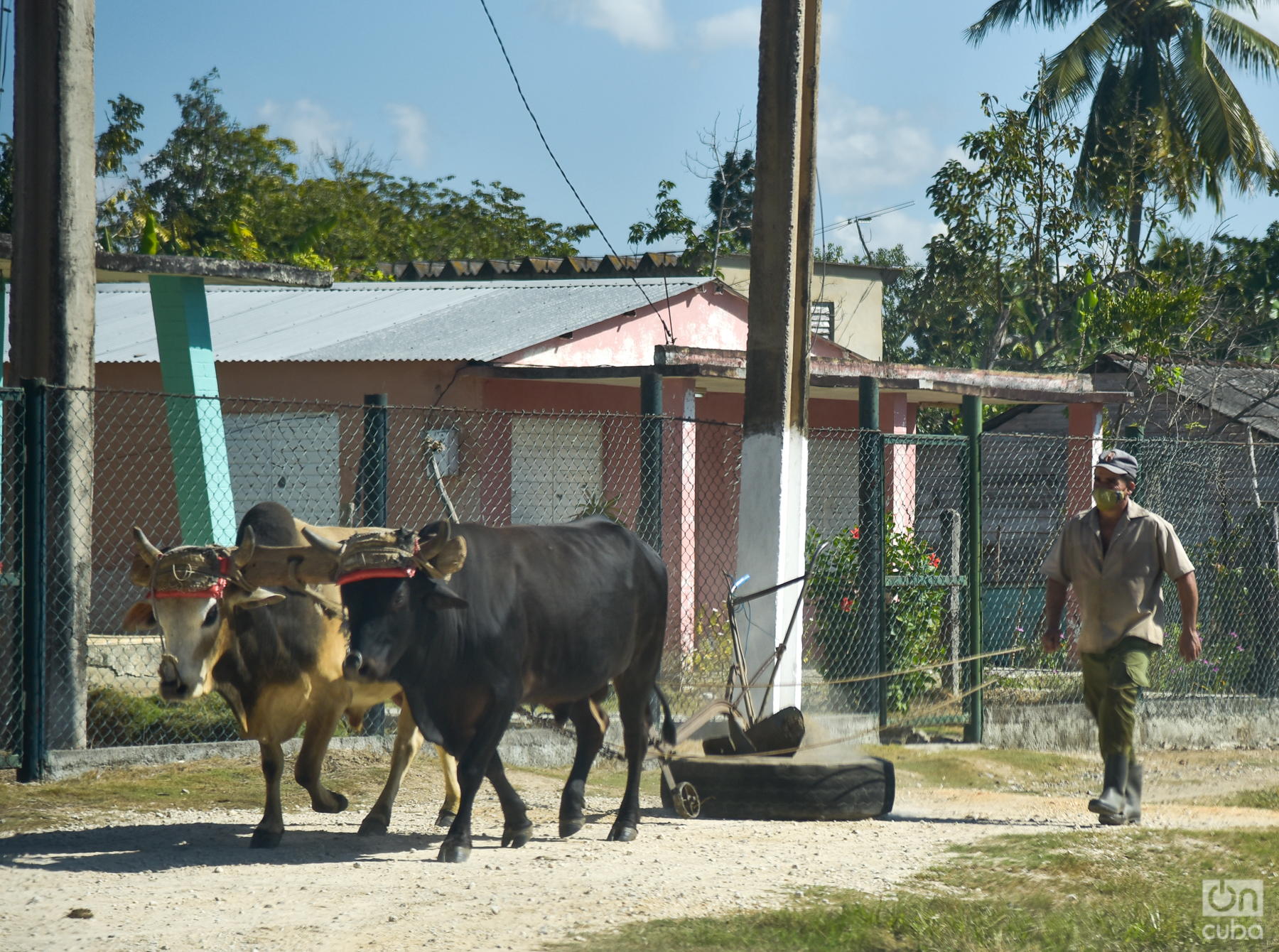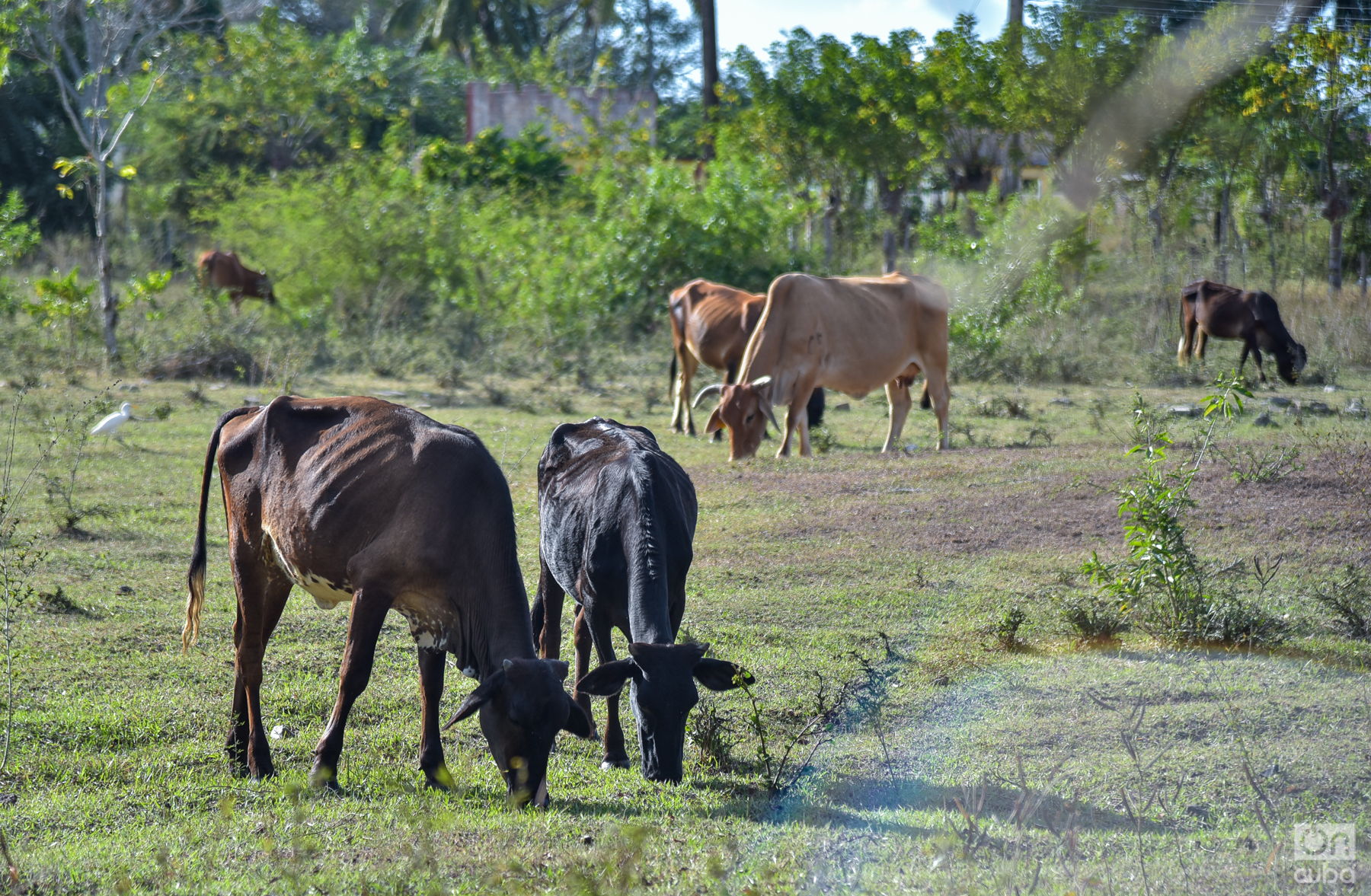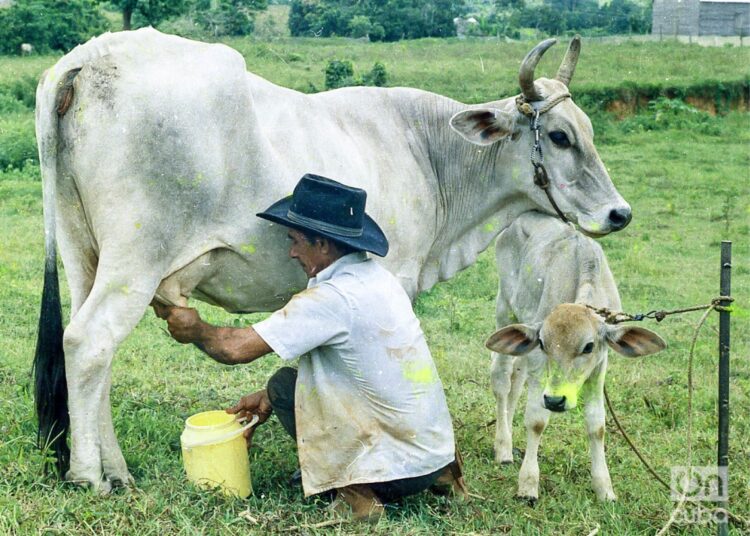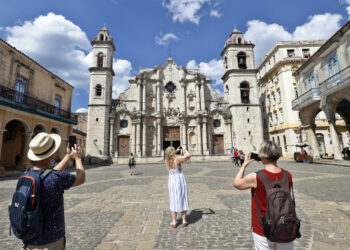From time to time, a horse in search of grass and shade enters the old agricultural collection warehouse of Sibanicú, in Camagüey. When it happens, it is the only sign of life left in the large abandoned building, which was turned into ruins years ago by cyclone and lack of maintenance.
Next to it, a similar building is headed for the same deterioration. It is the one that in other times was used to store the agricultural inputs that the municipality’s producers collected when they came to sell their crops to the enterprise that collected them. In many of these exchanges, no money was involved: the cattle farmers paid part of what they took using the “points” they received for fulfilling certain commitments in the delivery of milk or cattle for slaughter.
“This was always full of cooperatives coming and going. And the cattle farmers only came to buy, because their animals and milk did not pass through here, but rather they took them directly to the ‘livestock’ and ‘dairy’,” an old man who was taking care of a couple of horses in the place recalled to OnCuba.
According to what María del Carmen Fages, director of Development and International Affairs of the Logistics Business Group of the Ministry of Agriculture (Gelma), said in April of last year, that commercial point sales scheme depended on around 400 million dollars that the Ministry of Economy and Planning allocated each year to “support” the purchases of inputs that the farmers bought in national currency.
Seeking to cut expenses, in 2020 the government ordered that a portion of said sales be made in freely convertible currency (MLC), according to Fages in the aforementioned interview. The decision was justified by arguing that the virtual currency (MLC) would be used in a tiny percentage of the operations: those carried out in just 20 of the more than 300 establishments managed by Gelma throughout the country.
But, as happened in their “urban” counterparts, Gelma’s MLC stores ended up becoming the only practical option to acquire the supplies marketed by the enterprise.
“There was no gradualness or anything like that. Although the stores in national currency had long been out of stock, at least they existed. But the day after sales in foreign currency began, it was already impossible to find anything in pesos. Many products were passed directly from one store to another; raising the price, of course,” Marcos, a local farmer, told OnCuba.
No official specified how farmers would access the convertible currency. Even today, most state payments to farmers are usually made in Cuban pesos (only tobacco growers and some other producers receive MLC); nor have legal mechanisms been created for farmers to exchange their money for MLC. Worse still, since state payments are made by transfer, farmers face the additional difficulty of having to negotiate with informal money changers to convert their banked money into cash, since currency sellers only accept the latter.
“I have had to give 10 and even 15% more to withdraw money from my card because half of the time the bank does not have cash and other times it only authorizes withdrawals of 3,000 or 5,000 pesos per day per person. Transference money is ‘mortgaged’ money. Especially for us farmers, who cannot spend entire days outside the farm, standing in lines just to see when we are lucky enough to get cash,” Marcos added.

Better inputs than money
A week before speaking with OnCuba, Marcos bought ten rolls of barbed wire from a seller on Facebook. The investment, of 150,000 pesos, would have been greater had it not been for the fact that a friend, who regularly travels to the city of Camagüey, did him the favor of picking them up.
It would also have been more expensive to buy MLC and then look for the wire at Gelma’s store in the provincial capital. There, instead of the 15,000 pesos that he paid for each roll, he would have had to invest more than 20,000 pesos to buy the 69.25 MLC at which the product is valued in the store of said entity. On the same shelf, a 25-liter metal container for milk is offered at 109 MLC, and a pair of low-cut leather boots at 16.45. These are high prices, even under the new rates for milk collection put into effect last March by the Ministry of Agriculture.
Until the beginning of 2024, the maximum payment from the State to producer farmers for each liter of milk was 20 pesos, complemented by bonuses for overcompliance with the contract, transportation, and refrigeration.
With the new collection scale, farmers can charge up to 38 pesos if their milk receives the classification of “optimal quality,” and an additional 50 or 70 pesos for each liter above what is committed, depending on whether the delivery occurs during the rainy or dry season.
Although in principle this rule may seem positive, experience does not lead to optimism. In recent years, not even the successive increases in payments in pesos for milk collection contributed to the growth of national production. Since 2018, milk production has decreased by more than a third, with around 369 million liters at the end of 2022, the second lowest in more than thirty years.

Shortly after the new payment scale was announced, the Villa Clara radio station CMHW warned that it could “shoot up” the prices of milk and its byproducts even more in the informal market, putting up to 6 billion additional pesos into circulation, without a positive impact on milk collection. In the opinion of journalist Jesús Álvarez, the main effect will be “to continue increasing inflation.”
“Regardless of the rates that the State may propose, if they are in pesos, it will always be more profitable to sell milk or cheese and yogurt on the street. You earn more and you take the money in cash and at the moment. Not like with ‘dairy,’ which can pay the same in 15 days as after a lot of months. If the State wanted to encourage production, what it has to do is give things, not money. Say: ‘Did you deliver as many or more liters of milk? Well, that gives you the right to so many rolls of wire, or so many tanks of honey… or even a tractor or a truck.’ It is true this would require an investment, but it would always be much less than what is now spent importing powdered milk from New Zealand or who knows from what other places,” reflects Javier, a cattle farmer from the Vertientes municipality.
Three other Camagüey farmers consulted for this article agreed that they would prefer the return of the “cattle farmer stores” or some similar resource allocation system, instead of payments by transfer to their accounts in national currency. One of them claimed to have proposed it in a meeting with a deputy minister of agriculture, but the response was that it was a “country decision” and the current order of things had to be accepted.
Nor does the Ministry of Agriculture seem to be in a position to implement a system that requires tangible resources, not digital transactions. The failure of Gelma’s MLC stores attests to this.
The store of that network in Camagüey is today limited to a couple of shelves in one of the offices of the Gelma subsidiary in the provincial capital. Along with the rolls of wire and other items mentioned, only a few hand tools, ropes, and nails are offered. “And it is essential to be linked to the agriculture system,” the local shop assistant remarked with reluctance. Irrigation systems and construction materials also occasionally go on sale, “although we don’t have them very often,” she added.
The limited variety of offers is not temporary nor is it limited to Camagüey. In her interview a year ago, María del Carmen Fages acknowledged that, after a promising start, in which Gelma sold supplies for more than 18 million dollars, that commercial scheme had been “depressed” and to stay “alive” had had to appeal to “other openings.”
Her statements are surprising since Gelma’s business was calculated based on a generous profit margin. A paradigmatic example is that of the Belarusian MTZ tractors, very common and appreciated in the Cuban countryside.
The 82.1 model was marketed by Gelma through its digital platform (currently deactivated) for $26,965 and 28 cents. It is the amount paid by clients such as Herminio Martínez from Villa Clara, the first farmer in the country to buy a tractor through that means. At the same time, the same equipment could be found on a Belarusian sales platform for a much lower price: $11,658.
Cuba and Belarus maintain a close political relationship. In November 2023, President Alexander Lukashenko proposed extending it to the commercial sphere, when receiving Prime Minister Manuel Marrero in Minsk.
It would have been an opportunity to obtain preferential agreements with large agricultural machinery companies (such as MTZ) or fertilizers, two of Belarus’ main export products.
During his stay, Marrero spent a few hours visiting the MTZ central plant, mainly to commemorate a tour that Fidel Castro had made decades before. Upon his return, he was pleased to announce the signing of a contract to import Belarusian powdered milk, instead of inputs for milk production.










